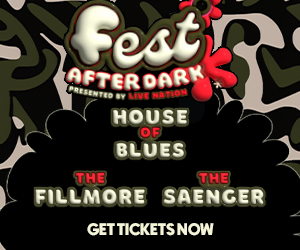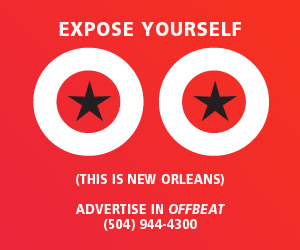Various Artists
Louisiana Hayride—Classic Country Radio Volumes 1-7
(Music Mill Entertainment)
Various Artists
The Big “D” Jamboree Live Volumes 1 & 2
(Dragon Street Records)
It comes up time and time again in interviews: The transistor radio hidden under the pillow and the influence those mysterious, faraway voices had on many a future rock ‘n’ roller. Prior to the mass conglomeration of America, musically and otherwise, there is no telling how many pint-sized future musicians tuned in to the utter regionalism routinely showcased on the Louisiana Hayride and the Big “D” Jamboree, not to mention their predecessors; WSM’s Grand Ole Opry and WLS’s National Barndance. The fact that this was live music being played over the air is probably what gave it that additional dose of electricity and made such a lasting impression on the listener.
Some of the artists were famous, others hardly known outside of their hometowns. But, as is heard on both of these invaluable collections of transcriptions, the celebrated regionalism that was the rule of the day gave all of them a spike of individuality that today’s country music scene would do well to pay some mind to. What else is one to make of Johnny Cash’s rule-bending Arkansas drawl, stellarly backed by Luther Perkins’ bare bones Telecaster and Marshall Grant’s thumping acoustic bass? Similarly, lesser known Texas rockers Ronnie Dee (Dawson) and “Groovey” Joe Poovey let out with a teenage battle cry that, household names or not, ranks them right alongside Carl Perkins and Gene Vincent, whom they share airtime with on the Big “D” set. It all happened in a very big way and there’s no wondering why when you listen to these very similar, yet differently executed sets of honky tonk, hillbilly and rock ‘n’ roll music.
Otherwise known as “the cradle of the stars,” The Louisiana Hayride broadcast from the Municipal Auditorium in Shreveport over KWKH from 1948 to 1960. Three hours to the west on Dallas’s Industrial Boulevard stood Ed McLemore’s Sportatorium, where KRLD’s Big “D” Jamboree broadcast “direct from the wrestling ring.” Originating the same year as the Hayride, the Jamboree held on a little bit longer, even employing former Hayride announcer Horace “Hoss” Logan during the ’60s.
Credited with breaking Elvis Presley into the big time, the Hayride, unlike the Opry, wasn’t so concerned with tradition as to banish drums and rock ‘n’ roll from its stage. Though the concentration here is country (four volumes), and gospel (two) (plus a whole volume of hillbilly comedy!!), it could hardly get more rockin’ than George Jones opening the proceedings with a (literally) shattering version of “The Race Is On.” The band storms through it at charging pace, Jones stumbling through the tongue twisting lyrics, starting to crack up, holding back his laughter and finally pulling it all together, dragging the band along with him full speed ahead!
Partially due to rock ‘n’ roll, country music was going through a bit of an identity crisis during the time that this material was being broadcast. While small labels like Starday, King, D, Fortune and others continued to allow the music to flourish in its natural, raw vibrancy, larger ones like RCA choked their artists with the swooping hand of Chet Atkins and his string-laden “Nashville Sound.” Some bigger labels like Capitol and Columbia were able to stay close to the source because their country A& R men would accept nothing less. But looking back on things nowadays, honky-tonk fans judge their idols by the records they made; hence Buck Owens and Webb Pierce are considered hardcore and Jim Reeves lightweight. These shows are the great equalizer: Reeves rocks with the best of ’em on “Red Eyed And Rowdy” and shines with soul on “Am I Losing You.” Sonny James, another name not favored with today’s hip country crowd, oozes heartbreak and feeling on “The Minute You’re Gone.” It’s so great to finally hear these guys as they really sounded, in a sparse setting with a band backing them that really knows what to do.
Aside from these eye-opening highlights, well, there are more. Hank Snow shows his penchant for the blues, sounding remarkably like Jimmie Rodgers (minus the yodeling) on “Texas Hambone Blues.” The Wilburn Brothers show their favor for getting drunk with “I’m Gonna Tie One On Tonight.” And Hawkshaw Hawkins and Loretta Lynn display their preference for Hank Williams with “Pan American” and “Move It On Over,” respectively. Loretta’s performance is so unbridled it’s damn near punk!
The gospel volumes are particularly good, if not only for the Louvin Brothers and Roy Acuff, for that absolutely under appreciated stalwart of the mid-twentieth century South: the gospel quartet. I know I stand alone in diggin’ the Statesmen and the Blackwood Brothers. No need to worry about anybody doing boxed sets on them anytime soon! The general consensus seems to be: how square is white gospel?? Square or not; some of the most rockin’ stuff on here are the Jordanaires’ “Working On A Building” and the Plainsman Quartet’s “Up Above My Head”—as close a cousin to Jerry Lee inspired mania as anything.
While the Hayride CDs contain mostly well-known artists, the Big “D” collection runs the gamut of every type of performer who played on the show, providing a more accurate picture of, as the liner notes proclaim, “what once was.”
The 30 page booklet that comes with this two CD set mentions that the Jamboree has long been cited by country and rock ‘n’ roll fans alike, but “those who appreciate it all—from the rawest hillbilly to the most darkly swaggering rock ‘n’ roll—simply treasure the Jamboree as a consistent, varied and exciting slice of side stream American music of the 1950s.” This is indeed aimed at those who dig it all, and that’s just one of its many strong points.
Like the Hayride, the Jamboree opened its arms wide to rock ‘n’ roll and though Disc 1 is subtitled “Hillbillies” and Disc 2 “Rockabillies,” the lines are blurred almost from the first song. Following a hilarious introduction where he wonders why “people, when they’re all together and having a good time, come backstage and ask us to do one of them real old sad tunes,” Cowboy Copas kicks the door down with a double bass-slappin’ take of “Tragic Romance” that is nothing if it isn’t rock ‘n’ roll. Ferlin Husky follows suit with “Aladdin’s Lamp,” symbol crashes and steel guitar colliding all the way. The Opry would’ve never had it.
It’s important to remember that Texas was one of the first documented places to feel the gathering storm clouds of rock ‘n’ roll’s arrival. Imperial recording artist Lew Williams (of “Cat Talk” and “Centipede” fame), has clearly stated that teenagers in Texas were listening to and playing something that they termed “Cat Music,” highly influenced by R&B, before Elvis recorded at Sun in July of 1954. Indeed, the Sky Club in Dallas was advertising “Cat Music Nights” as early as March of that year. Keeping that in mind, we reach probably the coolest thing about this collection: hearing the crowd react, and hearing what and who they are reacting to.
Both Carl Perkins and Gene Vincent come on with a fury that befits their status as rock ‘n’ roll royalty but the real heroes here, at least from the audience’s perspective, are relative unknowns like Charline Arthur. Her tough, snarling style was as controversial as the pants she wore onstage when other female performers were wearing skirts. “Welcome To The Club” and “What About Tomorrow” (both included here) are calling cards enough to shell out for the Bear Family collection that contains all her material.
Texans like Arthur, along with Orville Couch, Johnny Dollar, Sid King & The Five Strings and Johnny Carroll (not to mention Ronnie Dawson and Joe Poovey), practically seem to incite riots from the moment their first chord is struck.
“It was a little embarrassing” said Jamboree host Johnny Hicks, “because from time to time local people—especially the local kids—would get more applause than some of the guest stars…they had their own little fan clubs and everything.”
The Belew Twins, with their harmonized versions of “Rockin’ Bones” and “A Red Cadillac & A Black Moustache” certainly drove ’em nuts. “Rockin’ Bones” contains one of the most insane guitar solos EVER, courtesy of house guitarist Leon Rhodes, who also lends his bluesy, uncalculated wizardry to New Orleanian Werly Fairburn’s version of Fats Domino’s “All By Myself.” The screaming applause on this one truly send chills down your spine. Fairburn may not have been from Texas, but they sure gave him the locals’ welcome here.
All in all, it’s hard to imagine how anyone could do a better job with packaging, sound, and all-around execution of a project than Dragon Street has with their Big “D” set. If there was ever an argument for why CDs should exist, a project like this is it. Fifty-four songs in all, beautifully reproduced photographs, tons of information, the whole nine yards.
On the other hand the Hayride CDs, all of which are excellent musically, leave a good deal to be desired in the way of packaging, liner notes, and photographs. And each disc clocks in at an average of 24 minutes; ten songs apiece! Why not put it all on two CDs and do it right? Hopefully future Hayride projects will be better thought out and executed.
It would be great to see someone take up the slack (Dragon Street??) and do a Big “D” styled job with Hayride performances that are a little more obscure, but every bit as important (Margaret Lewis and Dale Hawkins are a few names that come to mind). The memory of the Hayride, as well as the artists who played on it, deserve better.




